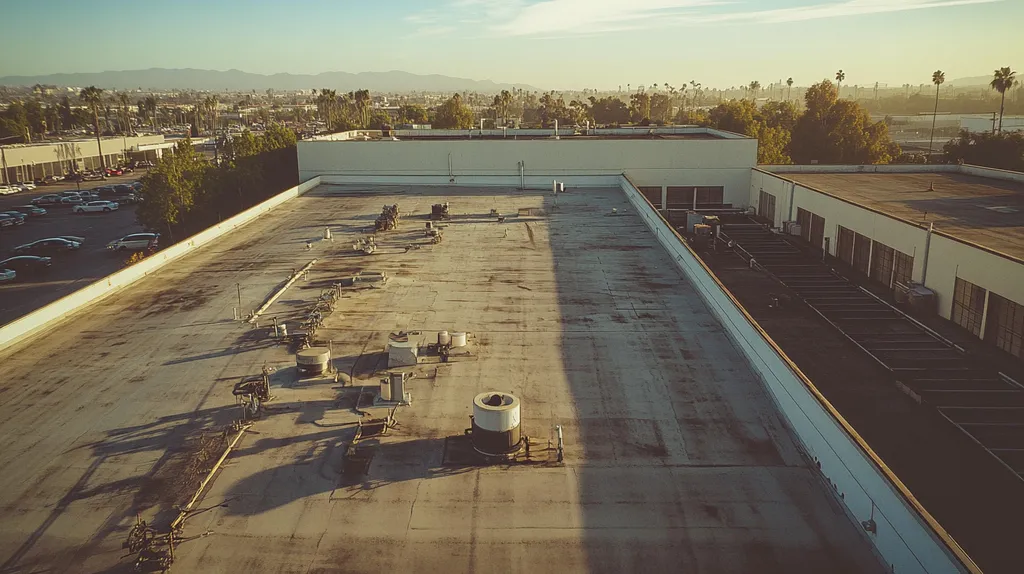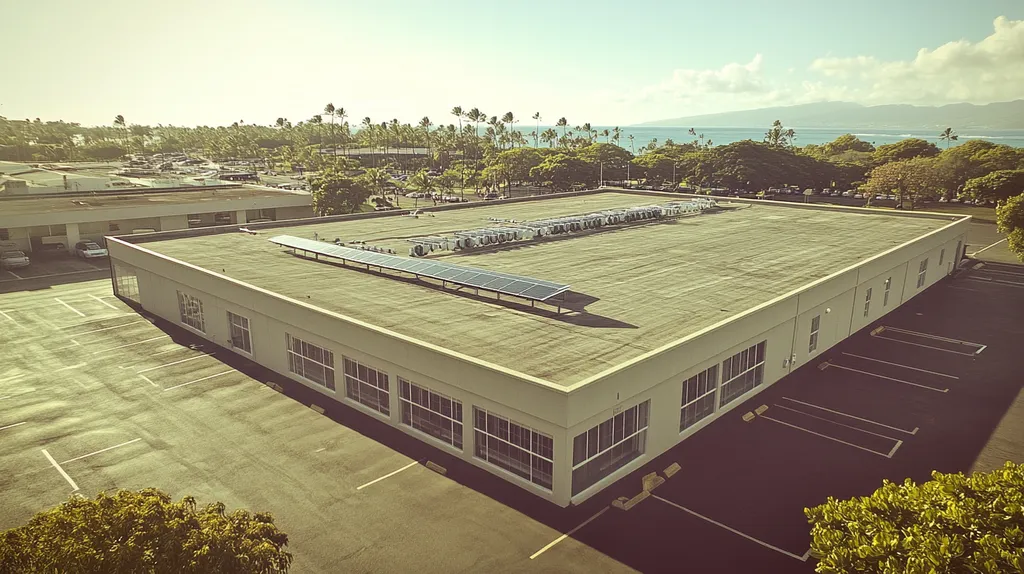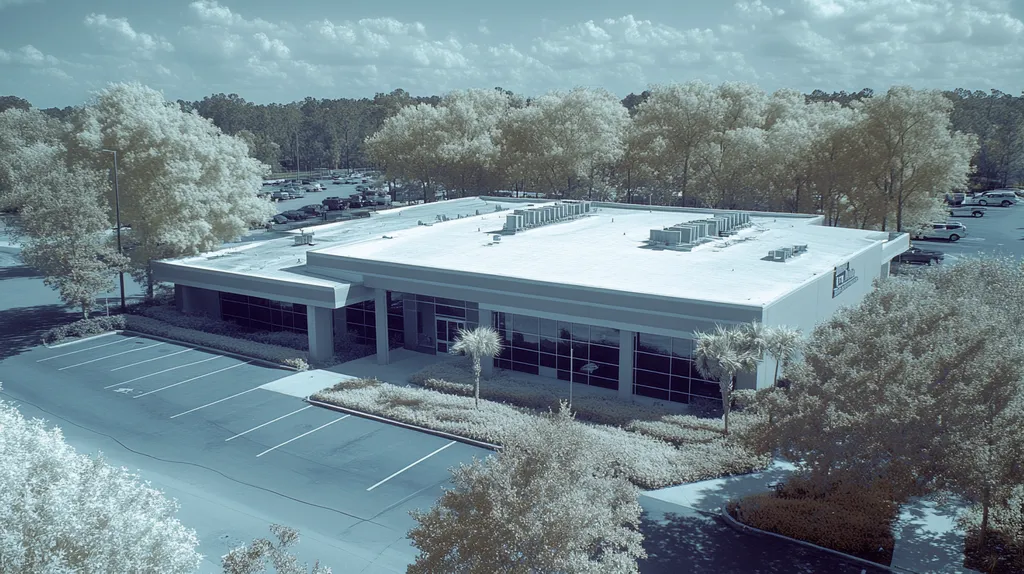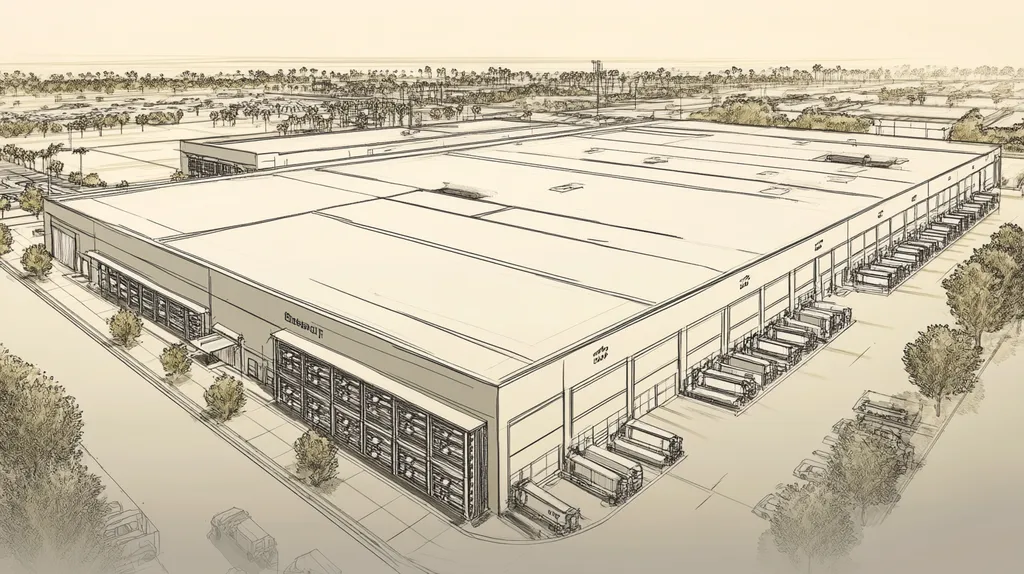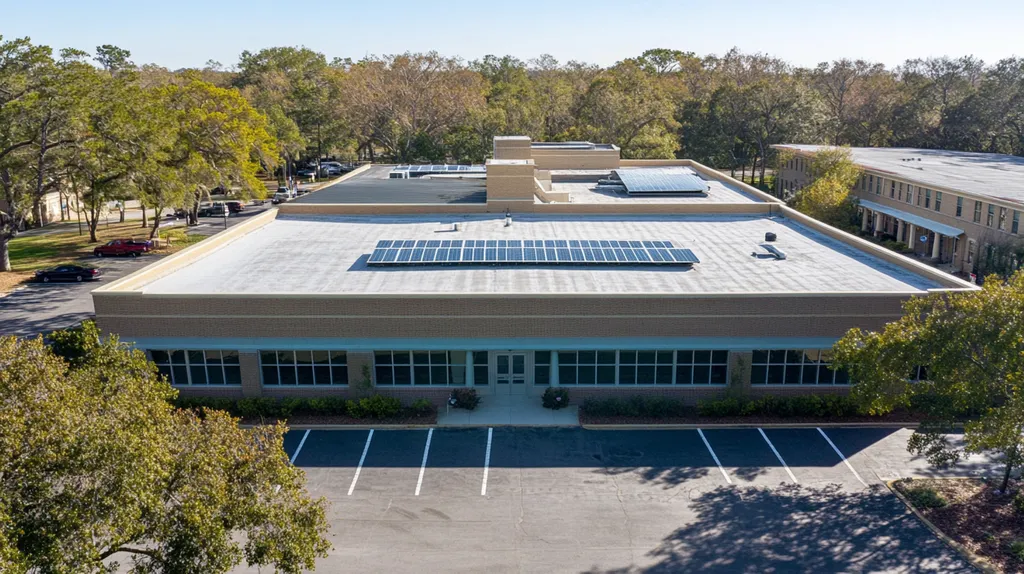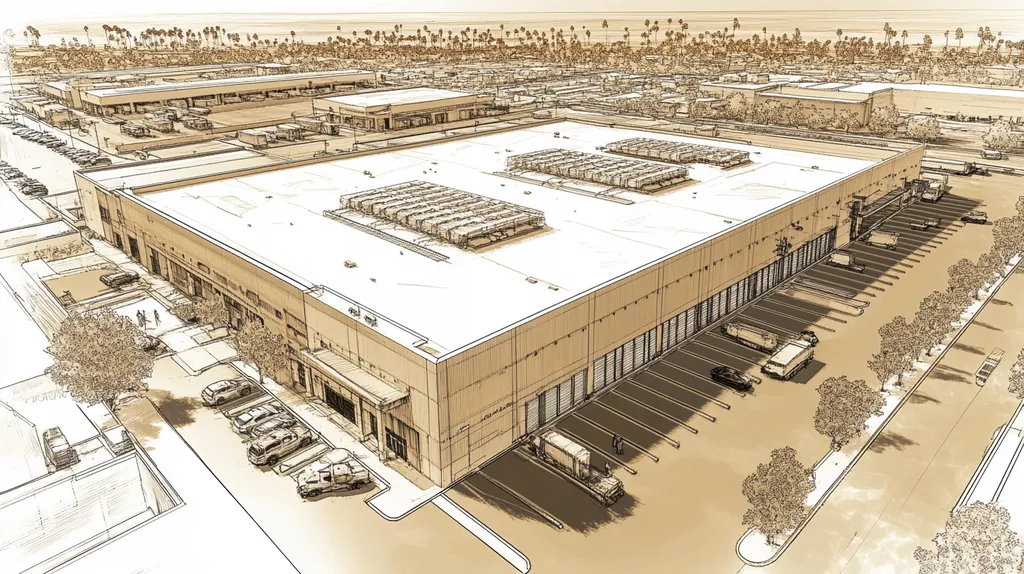Welcome to today’s Battle Royale featuring two roofing heavyweights: “Infrared Thermography” in the east corner versus “Smoke Testing” in the west!
Tonight’s showdown pits these contenders against each other across six punishing rounds designed to test every aspect of their performance for Indicators of Poor Ventilation on Commercial Roofs.
At stake? Millions in potential costs, decades of building protection, and the critical performance demands of modern commercial and industrial facilities.
Our professional judging panel will evaluate each round on technical merit, real-world performance, and value delivery. After all six rounds, we’ll declare our ultimate champion.
Ladies and gentlemen, facility managers and building owners… it’s time to rumble!
ROUND 1: INITIAL COSTS & INSTALLATION
Poor ventilation in commercial roofs can lead to devastating consequences, from accelerated material deterioration to skyrocketing energy costs. When choosing between infrared thermography and smoke testing for ventilation assessment, facility managers must carefully weigh the initial investment against long-term benefits. Making the wrong choice can result in missed problems that could cost hundreds of thousands in repairs.
Material Expenses
Proper attic ventilation provides year-round benefits for all types of roofing systems, creating cooler attics in the summer and drier attics in the winter. Understanding the balance between intake and exhaust vent areas is crucial for maintaining optimal roof performance. (source: Asphalt Roofing Manufacturers Association)
Infrared thermography requires significant upfront investment in specialized equipment. High-quality thermal imaging cameras can cost between $6,000 to $15,000, with additional expenses for analysis software and calibration tools.
Smoke testing equipment is considerably more affordable, typically requiring only smoke generators, fans, and basic measuring tools. The total equipment cost rarely exceeds $2,000, making it more accessible for facilities of all sizes.
Given the substantial difference in initial investment, smoke testing claims the clear “ADVANTAGE” in material expenses.
Installation Complexity
The complexity of implementation directly impacts both the assessment timeline and the reliability of results. Infrared thermography demands extensive technical expertise and precise environmental conditions for accurate readings.
Setting up infrared equipment requires careful calibration and consideration of factors like ambient temperature, surface conditions, and time of day. This complexity increases the likelihood of operator error and misinterpretation.
Smoke testing offers straightforward setup procedures that most maintenance teams can master quickly. The visual nature of smoke patterns makes it easier to identify and document ventilation issues in real-time.
Based on ease of implementation and lower skill requirements, smoke testing earns the “ADVANTAGE” in installation complexity.
Project Timeline
Time efficiency in ventilation assessment directly affects facility operations and maintenance schedules. Infrared surveys typically require specific environmental conditions and can take several days to complete properly.
The process of analyzing infrared data and creating detailed reports can add significant time to the project timeline. This delay may impact scheduling of necessary repairs or improvements.
Smoke testing can usually be completed in a single day, with immediate visual feedback on ventilation patterns. This rapid assessment allows facility managers to make quick decisions about necessary improvements.
With its significantly shorter implementation time, smoke testing claims the “ADVANTAGE” in project timeline considerations.
ROUND 1 RESULTS
When comparing initial costs and installation factors, smoke testing demonstrates clear superiority across all three categories. Its combination of lower material costs, simpler implementation, and faster completion time makes it the more practical choice for most facilities.
ROUND 1 WINNER: Smoke Testing
ROUND 2: DURABILITY & LIFESPAN
Poor ventilation remains one of the most overlooked threats to commercial roof longevity, potentially cutting a roof’s functional lifespan by up to 40%. Every square foot of roofing requires precisely calculated ventilation to prevent moisture accumulation and thermal stress. Understanding how different detection methods measure these critical factors can mean the difference between a roof lasting 30 years or failing in less than 15.
Equipment Longevity
Professional ventilation assessment equipment must withstand frequent use across diverse commercial environments. A general rule of thumb indicates that proper ventilation requires one square foot of ventilation for every 150 square feet of attic or crawl space to maintain optimal conditions. (source: AdvantaClean)
Infrared cameras demonstrate exceptional durability, with most professional-grade units lasting 7-10 years under proper maintenance. Their solid-state construction and lack of moving parts contribute to their reliability in demanding commercial environments.
Smoke testing equipment typically requires replacement every 3-5 years due to mechanical wear on generators and fans. The more frequent exposure to smoke particles and mechanical stress leads to faster deterioration of components.
Given its superior equipment lifespan and lower maintenance requirements, Infrared Thermography claims the “ADVANTAGE” in equipment longevity.
Result Reliability
Long-term reliability of ventilation assessment results directly impacts maintenance planning and budget allocation. Assessment methods must provide consistent, repeatable results across multiple inspections.
Infrared scans offer highly reliable data when performed under controlled conditions. Digital records allow for precise comparison over time, helping track subtle changes in ventilation patterns.
Smoke testing results can vary significantly based on wind conditions and building pressurization. While immediate visual feedback is valuable, documenting and comparing results across multiple assessments proves challenging.
Based on consistency and repeatability of results, Infrared Thermography earns the “ADVANTAGE” in result reliability.
Maintenance Requirements
Regular maintenance ensures accurate ventilation assessments and extends equipment service life. The frequency and complexity of maintenance directly affect operational costs and assessment reliability.
Infrared cameras require annual calibration and occasional software updates. Beyond these scheduled services, maintenance needs remain minimal, reducing operational interruptions.
Smoke testing equipment demands frequent cleaning, filter replacements, and mechanical adjustments. These ongoing maintenance requirements increase both labor costs and potential downtime.
With lower maintenance demands and simpler upkeep requirements, Infrared Thermography claims the “ADVANTAGE” in maintenance requirements.
ROUND 2 WINNER: Infrared Thermography
ROUND 3: PERFORMANCE FACTORS
Effective ventilation assessment can mean the difference between a roof lasting its full expected lifespan or failing prematurely. Modern commercial roofs represent massive investments, often exceeding $1 million for large facilities. Without proper ventilation monitoring, these investments face accelerated deterioration, leading to costly repairs and replacements.
Detection Accuracy
A well-ventilated roof system requires precise airflow measurement to prevent moisture accumulation, rotting, and mold development. Different ventilation requirements apply to various roof types, with proper ventilation requiring one square foot of ventilation for every 150 square feet of attic space. (source: AdvantaClean)
Infrared thermography provides detailed temperature mapping that reveals subtle variations in ventilation patterns. Its precision allows technicians to identify problem areas before visible damage occurs, offering comprehensive documentation of thermal anomalies.
Smoke testing yields immediate visual feedback but lacks the precision to detect minor ventilation issues. While effective for identifying major airflow problems, it cannot quantify the severity of ventilation deficiencies or track gradual changes over time.
Given its superior precision and documentation capabilities, Infrared Thermography claims the “ADVANTAGE” in detection accuracy.
Environmental Adaptability
Commercial roof assessments must function reliably across varying weather conditions and seasons. Successful ventilation monitoring requires consistent performance regardless of external factors.
Infrared thermography maintains accuracy across diverse environmental conditions, requiring only minimal temperature differential to produce useful results. This versatility enables year-round assessment capabilities with minimal weather-related delays.
Smoke testing effectiveness significantly diminishes in windy conditions or extreme temperatures. These limitations restrict testing windows and may force postponement of critical assessments.
Based on its consistent performance across varied conditions, Infrared Thermography earns the “ADVANTAGE” in environmental adaptability.
Data Analysis Capabilities
Modern roof management demands detailed documentation and trend analysis for informed decision-making. The ability to track changes over time directly impacts maintenance planning and budget allocation.
Infrared thermography generates comprehensive digital records that enable precise comparison across multiple assessments. This data-driven approach allows facility managers to identify developing issues before they become critical problems.
Smoke testing provides limited quantitative data, relying primarily on visual observations and manual documentation. This makes it difficult to track subtle changes in ventilation performance over time.
With superior data collection and analysis capabilities, Infrared Thermography claims the “ADVANTAGE” in data analysis capabilities.
ROUND 3 WINNER: Infrared Thermography
ROUND 4: MAINTENANCE REQUIREMENTS
Effective ventilation assessment and maintenance can make the difference between a commercial roof lasting 30 years or failing in less than a decade. With replacement costs often exceeding $1 million for large facilities, choosing the right maintenance approach is crucial. Understanding how different assessment methods impact ongoing maintenance requirements helps facility managers make informed decisions that protect their roofing investments.
Equipment Maintenance Demands
Regular equipment maintenance directly impacts both assessment reliability and operational costs. The complexity and frequency of required maintenance can significantly affect a facility’s ability to maintain consistent ventilation monitoring.
Infrared thermography systems require minimal ongoing maintenance beyond annual calibration and software updates. Their solid-state construction eliminates most mechanical wear concerns, reducing potential downtime and maintenance costs.
Smoke testing equipment demands frequent cleaning, component replacement, and mechanical adjustments. The constant exposure to smoke particles and mechanical stress leads to higher maintenance requirements and more frequent equipment failures.
Given its lower maintenance demands and superior reliability, Infrared Thermography claims the “ADVANTAGE” in equipment maintenance.
Staff Training Requirements
The effectiveness of ventilation assessment programs depends heavily on proper staff training and certification. Training requirements directly impact program costs and implementation success.
Infrared thermography requires extensive initial training and ongoing education to maintain proficiency. Operators must understand complex thermal patterns and environmental factors to produce accurate assessments.
Smoke testing needs minimal training, with most maintenance teams quickly mastering the basic techniques. The visual nature of the results makes interpretation straightforward and reduces the risk of operator error.
Based on simpler training requirements and easier implementation, Smoke Testing earns the “ADVANTAGE” in staff training.
Documentation Requirements
Proper maintenance documentation ensures compliance and enables trend analysis for preventive planning. The ability to track and compare results over time directly affects maintenance effectiveness.
Infrared thermography generates comprehensive digital records that enable precise comparison across multiple assessments. This data-driven approach allows facility managers to identify developing issues before they become critical problems.
Smoke testing typically relies on manual documentation and visual observations. The lack of standardized data collection makes it difficult to track subtle changes in ventilation performance over time.
With superior documentation capabilities and data analysis features, Infrared Thermography claims the “ADVANTAGE” in documentation requirements.
ROUND 4 WINNER: Infrared Thermography
ROUND 5: SUSTAINABILITY CREDENTIALS
The growing focus on environmental responsibility and energy efficiency has made sustainable roofing practices more critical than ever. With commercial buildings accounting for nearly 35% of total energy consumption in developed nations, proper ventilation assessment directly impacts both environmental footprint and operational costs. Choosing the right inspection method can mean the difference between achieving sustainability goals or falling short of regulatory requirements.
Environmental Impact
The environmental footprint of ventilation assessment methods extends beyond their immediate use. Equipment lifecycle, energy consumption, and waste generation all contribute to overall environmental impact.
Infrared thermography operates with minimal environmental impact, using passive detection methods that consume little energy. Its digital nature eliminates the need for chemical agents or disposable materials, supporting zero-waste initiatives.
Smoke testing requires continuous generation of artificial smoke, often using chemical compounds that can impact air quality. The process also generates waste through disposable smoke cartridges and filters that require frequent replacement.
Given its lower environmental impact and waste-free operation, Infrared Thermography claims the “ADVANTAGE” in this category.
Energy Efficiency
Proper ventilation assessment directly influences building energy performance. Identifying and addressing airflow issues can reduce HVAC loads and improve overall building efficiency.
Infrared thermography provides precise temperature mapping that helps optimize energy usage. By identifying thermal anomalies and air leakage points, it enables targeted improvements that enhance energy efficiency.
Smoke testing offers limited insights into energy performance, focusing primarily on airflow patterns rather than thermal efficiency. While useful for identifying major leaks, it cannot quantify energy losses or optimize system performance.
Based on its superior ability to support energy optimization, Infrared Thermography earns the “ADVANTAGE” in energy efficiency.
Long-term Sustainability
Sustainable roofing practices require assessment methods that support continuous improvement and long-term performance monitoring. The ability to track changes over time directly impacts sustainability goals.
Infrared thermography generates comprehensive data that enables trend analysis and predictive maintenance. This information helps facility managers make informed decisions that extend roof life and reduce resource consumption.
Smoke testing provides only snapshot assessments without quantifiable data for long-term tracking. This limitation makes it difficult to measure progress toward sustainability goals or justify improvement investments.
With its superior ability to support long-term sustainability initiatives, Infrared Thermography claims the “ADVANTAGE” in this category.
ROUND 5 WINNER: Infrared Thermography
ROUND 6: SPECIALIZED APPLICATIONS
Commercial roof ventilation assessments require increasingly specialized approaches as building designs become more complex. Modern facilities often incorporate multiple roof levels, diverse materials, and integrated mechanical systems that challenge traditional inspection methods. With roof replacement costs averaging $8-12 per square foot, choosing the right specialized assessment approach can prevent millions in premature failures.
Complex System Integration
Modern commercial roofs must integrate seamlessly with HVAC systems, solar installations, and other mechanical equipment. These interactions create unique ventilation challenges that demand sophisticated assessment methods.
Infrared thermography excels at detecting thermal patterns around mechanical systems and identifying how they affect overall roof ventilation. Its ability to create detailed thermal maps helps facility managers understand complex airflow interactions and optimize system performance.
Smoke testing struggles to provide clear data when multiple systems interact, as air currents from mechanical equipment can disrupt smoke patterns. This limitation makes it difficult to assess ventilation effectiveness in complex installations.
Given its superior capability to analyze system interactions, Infrared Thermography claims the “ADVANTAGE” in complex system integration.
Multi-Level Assessment
Modern commercial facilities often feature multiple roof levels and varied ceiling heights that create unique ventilation challenges. These architectural complexities require assessment methods that can adapt to different elevations and configurations.
Infrared thermography can effectively scan multiple levels simultaneously, creating comprehensive thermal profiles that show how air moves between different building sections. This capability helps identify ventilation issues that might be missed by simpler assessment methods.
Smoke testing becomes increasingly difficult with multiple roof levels, as smoke patterns become harder to track and interpret across elevation changes. The method’s effectiveness decreases significantly in buildings with complex architectural features.
Based on its ability to handle multi-level complexity, Infrared Thermography earns the “ADVANTAGE” in multi-level assessment.
Material Compatibility
Modern commercial roofs utilize diverse materials ranging from traditional built-up systems to advanced synthetic membranes. Each material responds differently to ventilation issues and requires specific assessment considerations.
Infrared thermography works effectively across all roofing materials, detecting temperature variations regardless of surface composition. This versatility makes it ideal for facilities with multiple roofing types or hybrid systems.
Smoke testing performance varies significantly based on roofing material and surface texture. Certain materials can mask or distort smoke patterns, leading to incomplete or misleading results.
With its consistent performance across all materials, Infrared Thermography claims the “ADVANTAGE” in material compatibility.
ROUND 6 WINNER: Infrared Thermography
AND THE WINNER IS…
After six grueling rounds of technical evaluation, we have our verdict, and it’s a decisive victory for INFRARED THERMOGRAPHY, winning five out of six rounds in this championship bout!
The champion dominated with superior detection accuracy, environmental adaptability, and comprehensive data analysis capabilities. Its knockout performance in sustainability credentials and specialized applications sealed the victory, demonstrating unmatched versatility across complex commercial roofing systems.
But don’t count Smoke Testing out completely! This scrappy contender proved its worth in Round 1, showcasing impressive strengths in cost-effectiveness and rapid deployment. For facilities with limited budgets or those requiring quick preliminary assessments, Smoke Testing remains a valuable player in the ventilation detection arena.
Remember, folks: Every commercial property presents unique challenges based on local climate, building design, and operational requirements. While tonight’s match provides valuable insights, individual building characteristics and regional conditions can significantly impact assessment outcomes. Always consult qualified roofing professionals who can evaluate your specific situation before making your final decision.
In the high-stakes world of commercial roofing, championship performance isn’t just about picking the winner – it’s about matching the right contender to your building’s specific ventilation challenges. Choose wisely, because in this arena, there are no second chances when it comes to protecting your roofing investment.
FREQUENTLY ASKED QUESTIONS
Q. What are the initial costs for commercial roof assessments?
A. Infrared thermography typically requires a larger upfront investment for specialized equipment, ranging from $6,000 to $15,000, including necessary software. In contrast, smoke testing is much more affordable, usually costing under $2,000. Choosing the right assessment method based on budget can prevent costly mistakes in ventilation management.
Q. How does ventilation impact the lifespan of a commercial roof?
A. Poor ventilation can cut a commercial roof’s lifespan by up to 40%, leading to moisture accumulation and thermal stress. Turbulent airflow can contribute to significant deterioration and unexpected repairs, making proper ventilation assessments essential for long-term durability and performance.
Q. What is the detection accuracy of commercial roof assessment methods?
A. Infrared thermography provides detailed temperature mapping capable of identifying minor ventilation issues prior to visible damage. In contrast, smoke testing often gives immediate but less precise feedback, making it harder to quantify airflow problems or track changes over time. The method chosen can have significant implications on maintenance planning.
Q. How do maintenance requirements differ between assessment types?
A. Infrared thermography requires minimal ongoing maintenance beyond annual calibration, ensuring reliability while keeping costs low. In comparison, smoke testing equipment demands frequent cleaning and part replacements due to wear, leading to higher maintenance costs and increased downtime, affecting the overall efficiency of the facility.
Q. How does the assessment method impact sustainability for commercial roofs?
A. Infrared thermography operates with minimal energy consumption and zero waste, supporting sustainability goals effectively. Smoke testing, however, involves the use of chemical smoke and disposable materials that can increase environmental impact, making the choice of assessment method vital for eco-friendly practices in modern commercial roofing.
Q. What challenges do multi-level commercial roofs present during assessment?
A. Multi-level commercial roofs come with unique ventilation obstacles, as different elevations can complicate airflow patterns. Infrared thermography excels in providing comprehensive thermal profiles across various roof levels, while smoke testing becomes increasingly difficult, risking overlooked ventilation issues that can lead to system failures.
Q. What is the importance of staff training in roof assessments?
A. Staff training directly influences the effectiveness of assessment processes. Infrared thermography requires significant training to handle its complexities and achieve accurate results. Conversely, smoke testing is relatively straightforward, requiring less training, making it easier for maintenance teams to successfully assess ventilation without extensive education.

